INTRODUCTION
SOMETHING LOOKS FISHY
Welcome to a review of the Samyang 8mm Fisheye Lens. Are you looking to do something different, or just need an insanely wide lens? Then try looking through the eyes of a fish – A fisheye lens. But fisheyes have been kind of rather extreme in the world of photography, known for their notorious distortion, the unique signature.
Some people love it to bits, and some hate it to shreds. But there’s one thing we can all agree on, that the fisheye offers a different perspective. A small plus to today’s technology is that we can always de-fish with Photoshop and get a regular ultra-wide-angle photo. That said, fisheye lenses are generally not cheap.
It is definitely a leap of faith for those who want to enter the fisheye world… But there is always an odd one in the crowd. The Samyang (or Rokinon in some regions) Fisheye lens costs less than half than the rest of the competitors. But is it any good? Read on to find out!
OUTLINE
THE OVERVIEW
| Price | About USD 250 for new |
| Links | Official Website: Samyang 8mm F3.5 UMC Fish-Eye CS II Get from eBay: Click here |
| Build Quality | Feels rugged, but rather plastic. Not weather sealed. |
| Optical Quality | Decently good optical quality at around f/8. |
| Mechanics | Does not have many moving parts that can break. |
| Usefulness | For a few super ultra-wide landscape and unique shots. |
| Value For Money | Does not have a ton of uses, but a good lens nonetheless. |
| Overall | Affordable, interesting and decent lens, why not? |
NAVIGATION
TABLE OF CONTENTS

Section A |

Section B |

Section C |
Closing |
SECTION A
LENS WALKTHROUGH
 All right, let us now walk through the details of the Samyang 8mm Fisheye itself – The Samyang Fisheye lens is cheap and light-weight compared to the other “fisheye beasts”, but just how well does it fare?
All right, let us now walk through the details of the Samyang 8mm Fisheye itself – The Samyang Fisheye lens is cheap and light-weight compared to the other “fisheye beasts”, but just how well does it fare?
BUILD QUALITY
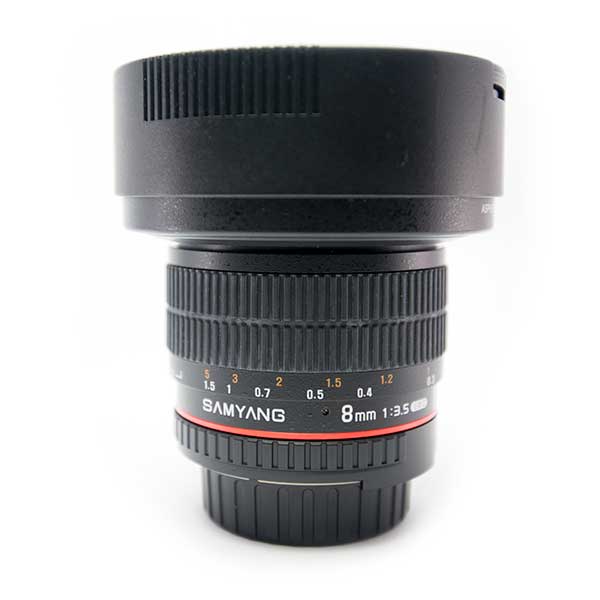
The Samyang Fisheye lens looks pretty decent at first sight, and as far as my “feel test” goes – It is mostly just plastic and rubber. But it is actually not that bad and feels rather solid in hand. At least it feels like one that will not break if you knock it against the wall.
LENS HOOD
A small extra note – The CS II is an upgrade from the earlier version, and it now comes with a removable lens hood. But really, I don’t think the lens hood will make much of a difference when you remove it… In fact, I will prefer the lens hood to be permanently fixed – Simply because the lens cover is unique to the lens hood.
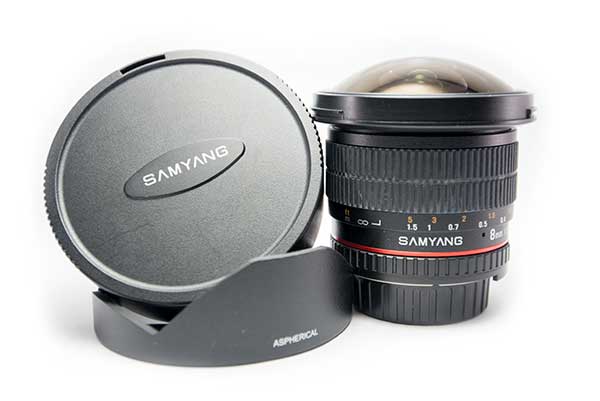
If you lose either the hood or cover, that’s it. A standard lens cap will not fit the Fisheye, and looking for a replacement is going to cost you a lot more. Probably not worth it for a lens priced as such. Luckily, the lens hood seems to be quite secure and does not come off easily.
THE MECHANICS
That aside, the focus ring needs a bit of force, but is rather smooth nonetheless… and the aperture ring clicks in place. Yes, this is a manual aperture ring in the digital age. How rare. There are no other knobs and buttons to worry about, and the rest of the construct seems decent enough – Except for the lack of weather sealing.
AUTO-FOCUS
Autofocus does not exist on this lens, this Samyang fisheye is a fully manual lens. That may sound like bad news, but in actual fact, you probably don’t even need to adjust the focus ring.
Yep, this lens has so much depth of field that almost everything is in focus. Even if you turn that focus ring, the difference is nearly unnoticeable. Just keep the “general” rule of thumb – Landscape, turn to infinity, 30mm to 50mm for anything closer. There is really nothing much to fuss about being on manual focus on this lens.
SECTION B
OPTICS & SAMPLES
 Well, the build of this lens actually turns out to be pretty decent. Now for the million-dollar question – how does the optical quality hold?
Well, the build of this lens actually turns out to be pretty decent. Now for the million-dollar question – how does the optical quality hold?
NOT A FULL-FRAME LENS!
Below is a photo taken with my Nikon D800E. Yes, the Samyang 8mm is not a full-frame lens. As the lens did not cover the entire area of the sensor, that resulted in a “black ring” – Don’t need to be alarmed, there is nothing wrong with this lens.
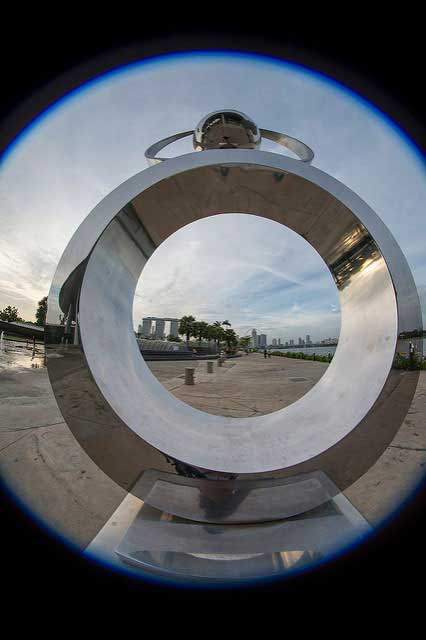
As you might have guessed it, this lens is still going to suffer from some vignetting on a crop sensor camera. But the optics are decent, crisp and sharp. To date, I did not have any issues with ghosting and flaring as well.
This fisheye also seems to have a very deep depth-of-field, even at wide open. So does it still make sense to “pump” the aperture? It appears that the answer is yes. When shooting at F3.5, this lens only produces a semi-decent photo. But as you step down the aperture, it hits the “sweet spot” and you have to see the photos below to judge for yourself.
AFTER SOME EDITING…
The below photos are all taken with my Nikon D800E, cropped and edited in Photoshop.
Sorry to those who are looking for a quick causal lens, the Samyang Fisheye is not for you. The true beauty of the lens only seems to come after you put in the effort to edit the photos. Of course, the distortion cannot be 100% fixed, but that is also what makes the fisheye so distinct and unique.
SECTION C
SPECS & USEFUL BITS
 That’s all for this review, and here is a small section on some extras and links that may be useful to you.
That’s all for this review, and here is a small section on some extras and links that may be useful to you.
THE SPECS AND WORTHY CONTENDERS
There are quite a lot of fisheye lenses around. But for the sake of comparison against the “big brothers”, I shall pit the Samyang against 2 of the competitors – The Nikon 10.5mm f/2.8 DX Fisheye and Canon EF 8-15mm f/4L USM Fisheye.
| Nikon | Canon | Samyang | |
| Price (USD) | About 750 | About 1000 | About 250 |
| Filter Size (mm) | NA | NA | NA |
| Weight (grams) | 303 | 542 | 420 |
| Elements | 10 elements in 7 groups | 14 elements in 11 groups | 10 elements in 7 groups |
| Sensor | Crop | Full frame, but only fills the frame at 15mm | Crop |
| Close Focus | 14 cm | 15 cm | 30 cm |
| Angle of View | 180° | 180° | 180° |
| Max/Min Aperture | 2.8 / 22 | 4 / 22 | 3.5 / 22 |
If you want a better fisheye, go for Nikon’s fast f/2.8 fisheye or go for Canon’s good glass. But you have to pay a price for it. Priced at only a quarter of Canon’s cannon, the Samyang sure looks suspiciously fishy. But I do think that the Samyang is still a seriously good buy for people on a budget.
THE GOOD
- A good and affordable lens into the fisheye photography world.
- Decently good optics.
- Rather smooth mechanics. Not much moving parts – will probably last long.
THE BAD
- Not weather sealed.
- Cannot attach any filters.
- Not a full-frame lens.
- Post-process mayhem.
CLOSING
THE VERDICT
 Do I love this lens? Not really. This is not a lens for everyday use and requires a lot of post-processing effort. But a decent fisheye lens at this kind of price is a steal… so I don’t have any reason to hate it either. I bought this lens out of curiosity, I just wanted to try catching skyscrapers in a single frame, and use the uniqueness of the Fisheye. The Samyang sure did the job, but only after some editing in Photoshop.
Do I love this lens? Not really. This is not a lens for everyday use and requires a lot of post-processing effort. But a decent fisheye lens at this kind of price is a steal… so I don’t have any reason to hate it either. I bought this lens out of curiosity, I just wanted to try catching skyscrapers in a single frame, and use the uniqueness of the Fisheye. The Samyang sure did the job, but only after some editing in Photoshop.
For casual photographers, I will not recommend this lens. There is really nothing much this lens can offer you. For those who are looking for something different, this lens just might be for you. Don’t expect too much out of it though. It is a lens that works ok-good, and that’s it. There is nothing too magical about this lens… and it does not smell of fish.

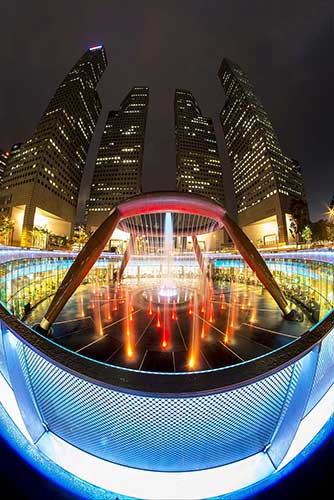
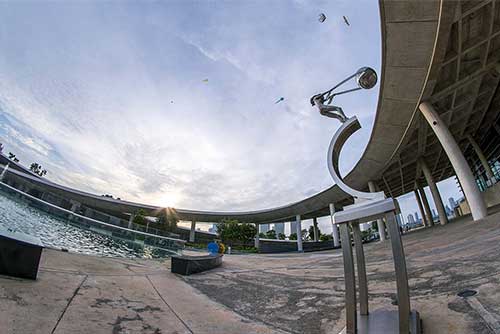
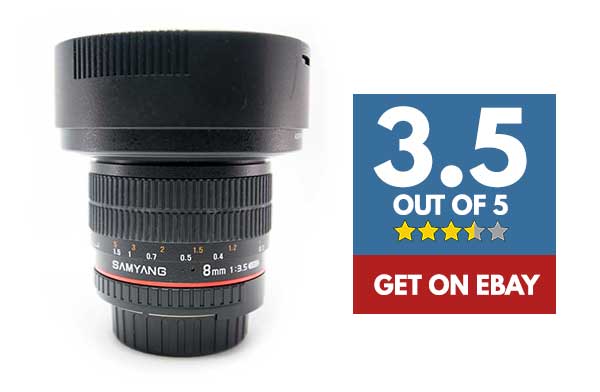
The lens with removable hood actually is for full frame cameras as well as APS-C. It gives a circular fisheye image on full frame with the hood removed. For APS-C, leave the hood on and the images fill the frame. It’s a “twofer” lens.